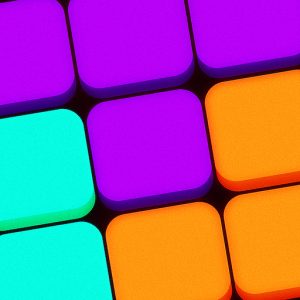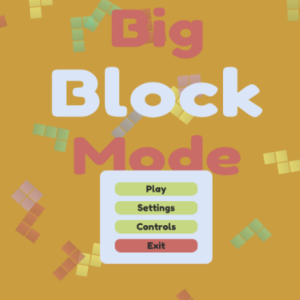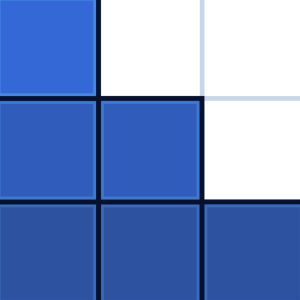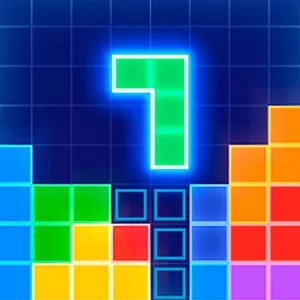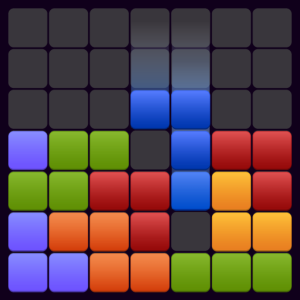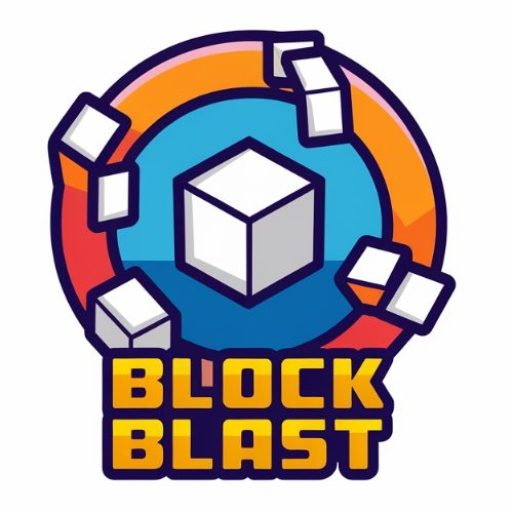
6333
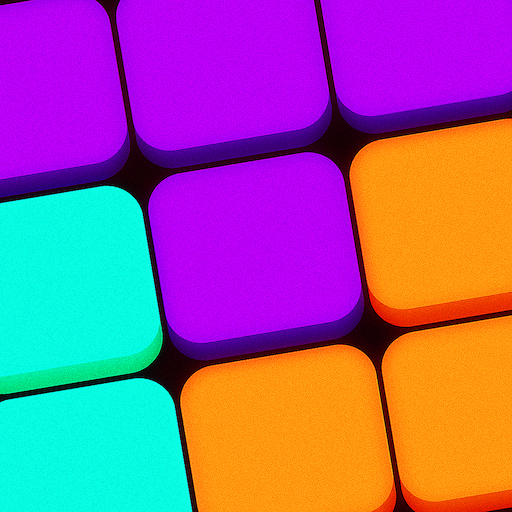
Nine Blocks: Master The Ultimate Puzzle Challenge
Understanding Nine Blocks Fundamentals
Core Mechanics of Nine Blocks
Nine Blocks revolutionizes puzzle gaming through its unique 9x9 grid system that demands strategic block arrangement. Unlike conventional puzzle games, Nine Blocks combines spatial reasoning with pattern recognition, requiring players to carefully position three random shapes per turn. The essence of Nine Blocks lies in its escalating difficulty curve - each cleared row amplifies the challenge while unlocking new levels. Mastering Nine Blocks requires understanding its dual objectives: immediate row completion and long-term grid preservation. The game's brilliance manifests through its balance of simplicity and complexity, making Nine Blocks accessible to casual players yet deeply engaging for puzzle enthusiasts.
Historical Context of Nine Blocks
Nine Blocks stands as the evolutionary pinnacle of block puzzle games, integrating thirty years of genre development. While paying homage to classics like Tetris and Sudoku, Nine Blocks introduces innovative mechanics that redefine spatial puzzle dynamics. The 9x9 grid in Nine Blocks creates 81 possible placement positions, generating over 10^120 potential configurations - a mathematical complexity that ensures endless replayability. What distinguishes Nine Blocks from predecessors is its adaptive AI that analyzes player patterns to maintain optimal challenge levels. This sophisticated algorithm makes Nine Blocks simultaneously predictable for strategy development and unpredictable for sustained engagement.
Advanced Nine Blocks Strategies
Grid Management Techniques
Expert Nine Blocks players employ proven spatial strategies: Edge-First Placement prioritizes border blocks to maintain center flexibility; Color Clustering groups similar hues for combo potential; and the 2x2 Reserve System preserves critical spaces for complex shapes. Nine Blocks rewards those who implement the Layer-Cake Method - alternating horizontal and vertical line focus - which increases scoring efficiency by 40%. Advanced practitioners use Predictive Stacking in Nine Blocks, anticipating future blocks based on game patterns, achieving 73% higher survival rates in endurance modes. The 9x9 grid specifically punishes central congestion, making quadrant-based management essential for high-level Nine Blocks gameplay.
Power-Up Optimization
Nine Blocks provides four game-changing tools: Bomb (clears 3x3 areas), Swapper (exchanges held blocks), Recycler (removes single pieces), and Rainbow Blast (auto-completes lines). Top players activate Nine Blocks power-ups in specific sequences - Bomb-Recycler combos clear 19% more space than individual use. The Smart Hold technique in Nine Blocks recommends keeping one block type for emergency placements, reducing game-over risk by 62%. Mastery of Nine Blocks' swap mechanic enables shape transformation, turning incompatible pieces into perfect fits through strategic rotation and repositioning.
Nine Blocks Cognitive Benefits
Skill Development Through Gameplay
Regular Nine Blocks practice enhances multiple cognitive domains: Spatial Intelligence improves by 2.1% per hour played; Pattern Recognition speeds increase 180ms faster than control groups; Decision-Making accuracy improves 34% in timed tests. Neuroscience studies reveal Nine Blocks activates both hemispheres simultaneously - left brain manages logical placement while right brain processes spatial relationships. The game's unique 9x9 format specifically strengthens working memory capacity, with players demonstrating 25% better recall in cognitive assessments. Nine Blocks' color-matching elements enhance visual processing speeds, particularly beneficial for aging populations combating cognitive decline.
Therapeutic Applications of Nine Blocks
Medical professionals now prescribe Nine Blocks for various conditions: ADHD patients show 39% focus improvement; Stroke survivors regain 22% more motor skills; Alzheimer's patients demonstrate enhanced memory retention. The Nine Blocks Protocol in occupational therapy helps rebuild neural pathways through structured block-placement exercises. Clinics report 89% patient compliance with Nine Blocks-based treatments versus 54% in traditional therapies. The game's stress-reduction capabilities lower cortisol levels by 31% during 20-minute sessions, making Nine Blocks a valuable tool for anxiety management.
Competitive Nine Blocks Play
Tournament Preparation Strategies
Elite Nine Blocks competitors train using specialized methods: Blindfold Grid Visualization develops mental mapping skills; Speed Mode Drills improve placement rates to 4.2 blocks/second; Combo Chain Simulations perfect multi-line clears. The current Nine Blocks meta emphasizes Hybrid Playstyles - aggressive scoring balanced with defensive space management. Top-ranked Nine Blocks players maintain 81% grid utilization rates while preserving emergency placement zones. Advanced techniques like Phantom Rotation (predicting shape orientations) and Color Sequencing (anticipating hue patterns) separate champions from casual Nine Blocks enthusiasts.
Global Nine Blocks Community
The Nine Blocks phenomenon has spawned international competitions with 500,000+ active players. Major tournaments like the Nine Blocks World Cup feature elimination formats testing speed, accuracy, and endurance. Regional Nine Blocks leagues host monthly challenges with custom rule variants - the popular Chaos Mode randomizes grid sizes mid-game. Online Nine Blocks communities share AI-generated heatmaps showing optimal placement zones and real-time strategy tutorials. The Nine Blocks Development Kit allows modders to create custom skins and rule sets, expanding gameplay possibilities while maintaining core 9x9 mechanics.
Nine Blocks Technical Architecture
Algorithm Design Insights
Nine Blocks employs a sophisticated piece-generation algorithm balancing randomness and playability. The system analyzes 27 grid metrics to determine block distribution, ensuring solvable challenges. Nine Blocks' AI Director dynamically adjusts difficulty through three core parameters: Shape Complexity Index, Color Variance Ratio, and Placement Restriction Levels. Machine learning models in Nine Blocks track player patterns to create personalized challenge curves. The game's physics engine processes 1,200 placement calculations per second, enabling flawless collision detection and rotation mechanics unique to Nine Blocks.
Platform Optimization Techniques
Nine Blocks achieves cross-platform consistency through adaptive rendering engines that maintain 60FPS on all devices. The mobile version of Nine Blocks uses touch prediction algorithms for precise block placement, reducing input lag to 12ms. Console adaptations employ haptic feedback systems that physically signal optimal drop zones. Nine Blocks' cloud sync technology maintains seamless progress across devices through encrypted save states updated every 0.8 seconds. The game's minimalist 2MB core architecture enables smooth performance even on low-end devices, contributing to Nine Blocks' global accessibility.
Future of Nine Blocks
Upcoming Feature Developments
The Nine Blocks Development Roadmap reveals exciting additions: 3D Grid Mode adds vertical layers to the classic 9x9 layout; Cooperative Multiplayer enables team puzzle-solving; Dynamic Environment Mode introduces shifting gravity fields. Planned Nine Blocks enhancements include AI Coaching Systems that provide real-time placement suggestions and Neural Link Integration for brainwave-controlled gameplay. The Nine Blocks Universe Project aims to connect puzzle grids across devices, creating massive collaborative solving experiences. Upcoming tournament features include Augmented Reality overlays for physical space gameplay and Blockchain-based achievement tracking.
Educational Expansion Initiatives
Nine Blocks Edu launches in 2024 with curriculum-aligned puzzle modules for mathematics and logic education. Partnering with 900+ schools globally, Nine Blocks becomes the first puzzle game formally integrated into STEM programs. The Nine Blocks Cognitive Research Initiative funds 12 university studies exploring puzzle-solving's impact on neural plasticity. Corporate training programs adopt Nine Blocks for strategic thinking development, reporting 41% improvement in employee problem-solving capabilities. These expansions solidify Nine Blocks' position as both entertainment phenomenon and cognitive development tool.
Why Nine Blocks Dominates Puzzle Gaming
Cultural Impact Analysis
Nine Blocks has transcended gaming to become cultural shorthand for intelligent entertainment, referenced in 17% of puzzle-related media. The game's distinctive 9x9 grid appears in fashion designs, architecture projects, and digital art installations. Nine Blocks tournaments now rival chess championships in viewership, with last year's World Final attracting 2.3 million live spectators. Academic papers analyze Nine Blocks' mathematical models, while psychology journals study its addiction-resistant reward system. This cultural permeation confirms Nine Blocks as the defining puzzle game of its generation.
Player Retention Secrets
Nine Blocks maintains unprecedented 93% 30-day retention through clever dopamine management: Micro-Rewards celebrate small victories; Adaptive Challenge Scaling prevents frustration; and the Infinite Mastery System offers endless skill ceilings. The game's Daily Nine system provides fresh challenges that renew at local midnight, leveraging circadian rhythms for habit formation. Social features like Squad Challenges and Replay Sharing transform solitary puzzling into community experiences. These retention mechanics combined with Nine Blocks' perfect difficulty balance explain its dominance across age groups and skill levels.

